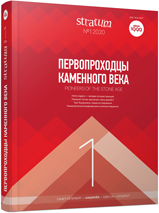Миграции в процессе становления пластинчатой индустрии раннего верхнего палеолита в Западном Забайкалье
Migrations and the Formation of the Early Upper Palaeolithic Blade Industries in Western Transbaikalia
Author(s): Vasilii I. Tashak, Yuliya E. AntonovaSubject(s): History, Archaeology, Migration Studies
Published by: Издательский дом Stratum, Университет «Высшая антропологическая школа»
Keywords: Western Transbaikalia; Initial Upper Palaeolithic; stone industry; migrations; blade industry; Tolbaga culture;
Summary/Abstract: Starting with the second half of the 20th century, the Upper Palaeolithic of Western Transbaikalia has been considered from contrary points of view: monocultural — multicultural; being a whole with Mongolian, Altaian and Central Asian Palaeolithic industries — formed on the local base but typologically similar to the Palaeolithic on the indicated territories. One of the latest concepts propose to envisage the origin of the Western Transbaikal Upper Palaeolithic with blade industry in the base as the result of the ancient peoples’ migration from the Mountain Altai region. According to this model, the relationship between the Initial Upper Palaeolithic of Altai region and Tolbaga Palaeolithic culture is observed. The article represents the comparative analyses of the criterions, which constitute the base of migration concept of Transbaikal Upper Palaeolithic origin; the main Tolbaga culture characteristics, uniform and distinctive features comparing with the sites of Mongolia and Altai are offered. Concerning the Western Transbaikal Upper Palaeolithic blade industry’s origin, a comparative characterization is made with the Levantine sites where the earliest and well-recorded blade industries of the Initial Upper Palaeolithic are revealed. The results of comparisons allowed us to make a conclusion about the possibility of the Tolbaga culture origin from the region of the Near East through the western part of the Central Asia during the peoples’ migration along the North route of the anatomically modern human dispersal.
Journal: Stratum plus. Археология и культурная антропология
- Issue Year: 2020
- Issue No: 1
- Page Range: 105-116
- Page Count: 12
- Language: Russian
- Content File-PDF

